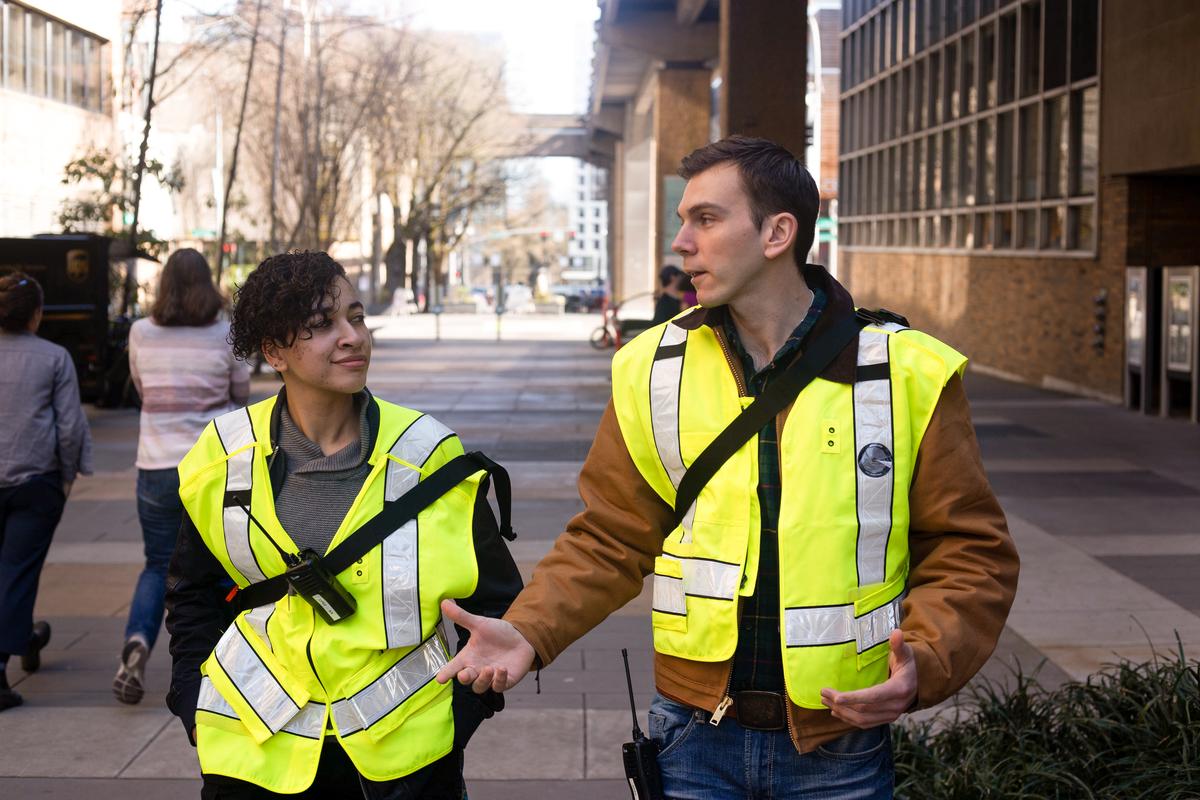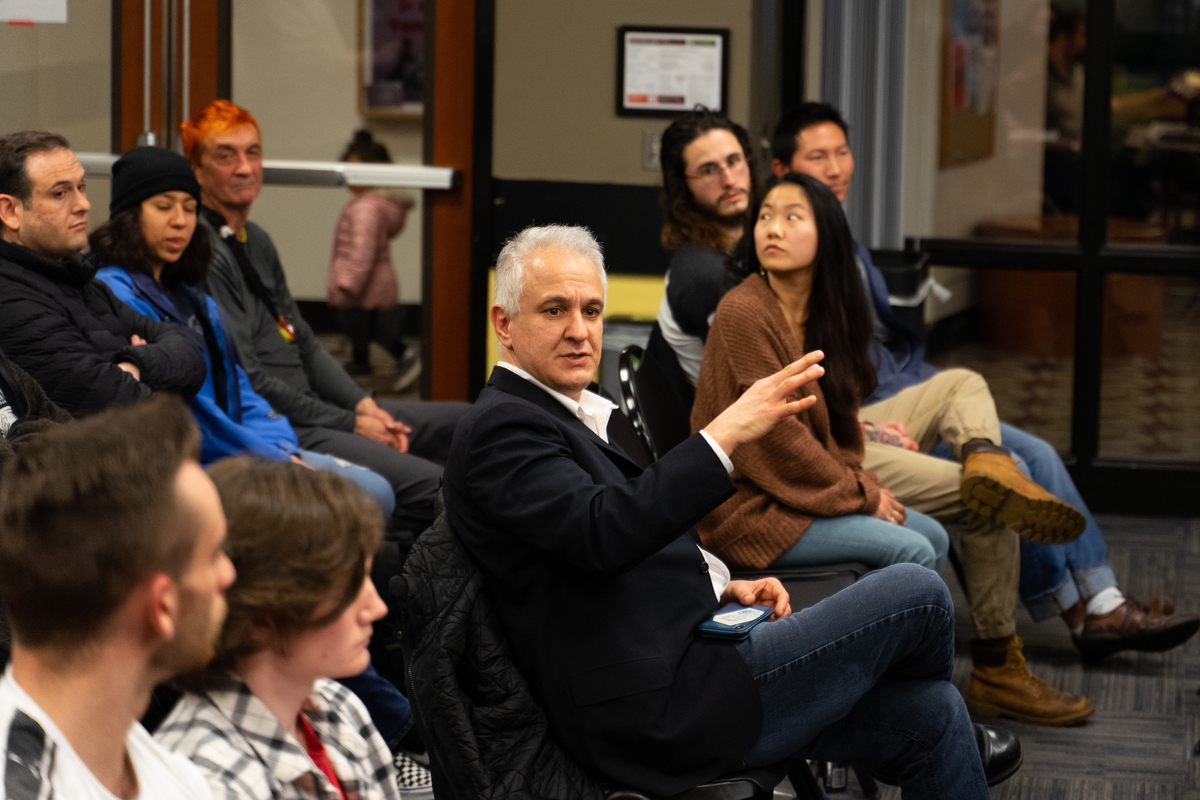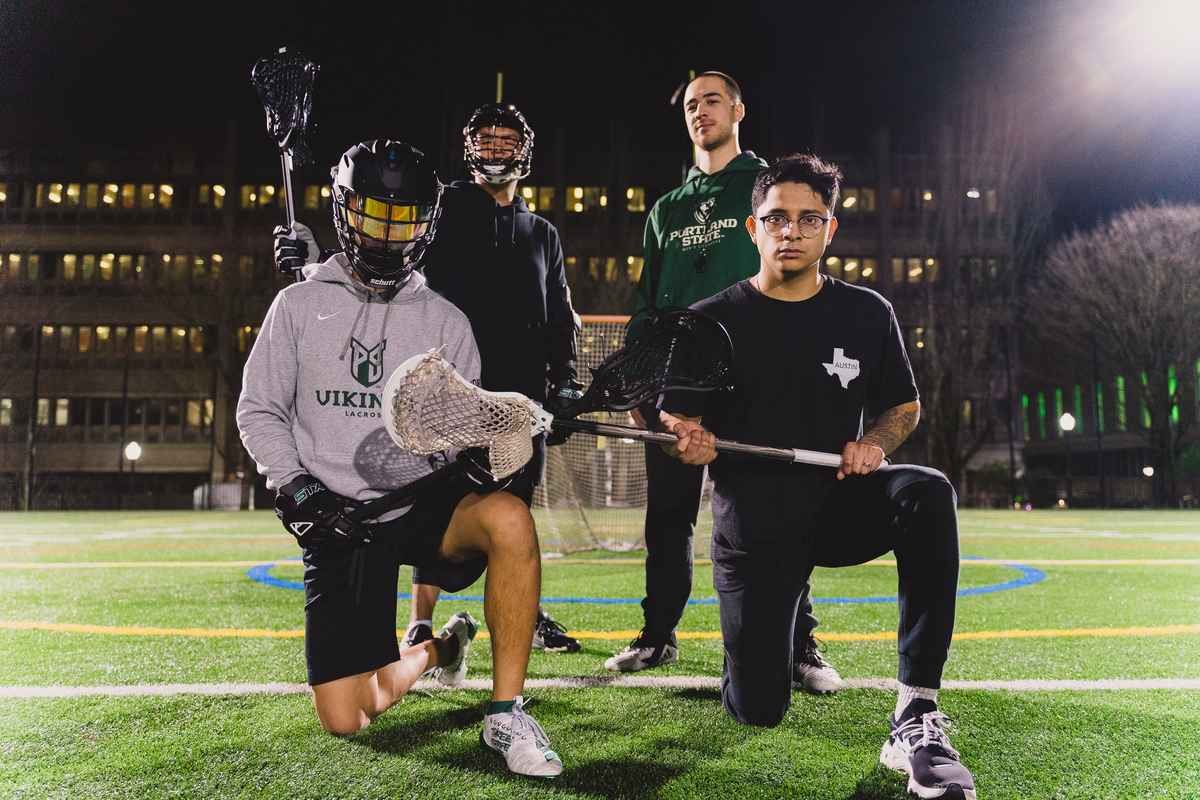Four student safety ambassadors have completed training and now tour campus.

The next phase in campus safety
Touring Portland State’s campus, the first group of student safety ambassadors fulfill their main goal: ensuring the safety and comfort of students on campus.
The student safety ambassadors—a facet of the new safety plan enacted by PSU President Stephen Percy in Oct. of 2019, over a year after the death of Jason Washington on June 29, 2018—are also tasked with duties that range from conducting building checks, ensuring student spaces are used properly, maintaining a smoke-free campus and being liaisons between students and campus safety if requested.
The hiring of student safety ambassadors was accompanied by the hiring of two police officers and three more public safety officers.
“We’ve hired four [student safety ambassadors],” said Chief Joe Schilling, director of Campus Public Safety. “The reason we’ve started with four is so we can get them trained and working.” Hiring small groups of ambassadors at a time allows for campus safety to ensure adequate training, Schilling said.

According to PSU’s Pacific Sentinel, the safety ambassadors have completed “one month of training that covers CPR certification, CPSO policy and procedure orientation and four hours of de-escalation instruction from Campus Police Officer Peter Ward” and have begun walking alongside the student body. While some training was conducted inside a classroom or online, most was on the job.
“There’s a lot of training being provided for them whether it’s online or [someone] we brought in, but [it is] basically in-the-field training,” said Lt. Craig Whitten, a campus public safety officer of 29 years and direct supervisor of the student safety ambassadors.
Besides a bright yellow work vest, a radio, a satchel containing a school map and other informational booklets, safety ambassadors remain in plain clothes in lieu of a uniform. “I think the uniform makes them look more [like] police,” Whitten said. “They are students. They’re amongst their peers so why not dress like your peers?”
The ambassadors have learned how to recognize an opioid overdose and carry Narcan—an opioid overdose reversal agent. Schilling plans for the ambassadors to carry tourniquets in the future, according to The Pacific Sentinel.
“They’re students first,” Whitten said about his focus for the safety ambassadors. “As in their priority when they’re here is their education. [Secondarily] they’re providing a service to the community and [CPSO].”
Flexibility is important as the ambassadors are still students and, therefore, their hours are based around their class schedules. “Right now, they’re working about five hours a shift, four days a week,” Whitten said. “[We] try to limit that based on their schooling, so generally 20 hours.”
This initial training period is only the start though, as Whitten went on to discuss future training for student ambassadors. “It’s an ongoing process, you know, they’re out walking around and interacting with the community,” Whitten said. “Things come up, there are questions. It’s ongoing training.”
The four student ambassadors typically operate in groups of two. Members of these groups rotate, ensuring students work with different people, and they complete their duties and checks in every building on campus. Aseel Alattabi and Liam Cole—two of the safety ambassadors—shared their experiences working together to help improve their community. Both Alattabi and Cole spoke about their individual reasons for taking on the position.
Being a criminal justice major, Cole mentioned how the experience he is getting walking around and interacting with the community has been invaluable: “I thought it’d be really cool to get to see behind the scenes and work with campus police and public safety. We spent a lot of time kind of partnering with campus safety to see what they do on a daily basis and how they operate.”
Alattabi—who also works as a mentor for new international students—talked about helping the community: “I saw a job called safety ambassador, which is basically helping the whole community. I decided ‘yeah I’ll just do it.’”
“Every shift is relatively similar,” Cole said. “We come into the public safety office where we get our gear, make sure the radios work, then we go check in with the dispatcher.”
After ensuring their equipment is working, the ambassadors huddle with Whitten in preparation for their shift. “[Whitten] will come and talk to us for a couple minutes and check in with us,” Cole said. “He will ask things like: Do we need anything? Is there any issue with the shift today? If not he will tell us the events going on like there’s a concert in Lincoln or there’s a basketball game in Smith, [after that] we’ll roll out.”
Moving around campus, the safety ambassadors first move through each building on campus, inspecting every floor. In each building, they ensure no doors which should be locked—such as the student study rooms in Millar Library—are left open. But when they’re not conducting their tour, the safety ambassadors also provide a friendly face in case a student needs to talk.
“Sometimes we’ll run into students and friends,” Cole said. [We] say hello and tell them what we do, like a general run down or [say] ‘oh, I saw you last week. What’s up?’”
Alattabi spoke of the initial attention the safety ambassadors received, but it has since waned after touring around campus: “At the start people were staring at us because they didn’t know what we were actually doing,” Alattabi said. “It’s been a while now so people know [about us] better.”
Alongside providing friendly conversation or informing about the campus, the student safety ambassadors are available for students to bring up any concerns they may have. “We listened to a student and [learned] they had asthma,” Cole said regarding a student’s concern about smoking on campus. “As they were leaving Cramer they walked into a cloud of smoke and were concerned it was a smoke-free campus. We let them express their concerns to us and [we said] we’re gonna pass it on to the appropriate people. If they want, we can take their name and email and get in touch directly with campus public safety. They can also be anonymous. We’re not required to say [names].”
Another important facet of the safety ambassadors job is to attend events around campus and assist attendees. “There was a Middle-Eastern culture night in the [Smith] ballroom where there was a safety briefing for Muslim women walking around campus with a hijab,” Cole said. Alattabi and Cole acted as liaisons between CPSO and the event organizer—a member of the International Students club.
As the five-hour shift ends, the ambassadors head back to the CPSO office. “We’ll talk to Craig and tell him about the day and if we have any student concerns,” Cole said. “If we had any dealings with public safety, like us reporting stuff to them [then] going into more detail.”
With the introduction of four safety ambassadors—and three more ambassadors on the way—Whitten stressed the main point for them: “Sometimes, students may not want to ask a question of a police officer in uniform or a public safety officer. They can seek out the safety ambassador. They are out there to answer questions and provide assistance.”
More information about the ambassadors and President Percy’s safety plan can be found on the PSU website.





